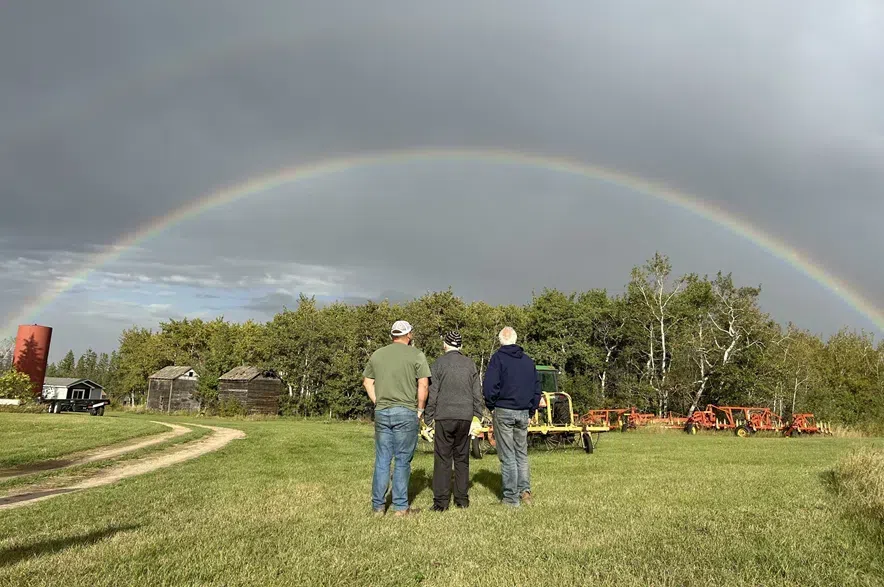Widespread rain in Saskatchewan has turned out to be a mixed blessing for agricultural producers.
According to the weekly crop report from the Saskatchewan Ministry of Agriculture, which covered the week ending on Monday, plenty of rain fell on most of the province, but while the extra moisture will help out later-seeded crops, it could have a negative impact on early seeded fields.
Read more:
- Chinese tariff on canola seed comes into force as farmers hope for resolution
- Wicked weather brings hail, strong winds and funnel clouds to central Sask.
- Federal ministers meet with canola lobby to discuss new China tariffs
The Beatty area held the record for the most rain in the week ending Monday, with 105 millimetres, followed by the Calder area (103mm) and the Star City area (102mm).
“The abundance of rain dramatically increased topsoil moisture levels last week. Provincial cropland topsoil moisture now sits at 11 per cent surplus, 75 per cent adequate, 11 per cent short and only three per cent very short,” the ministry noted.
“For hayland, topsoil moisture is eight per cent surplus, 68 per cent adequate, 16 per cent short and eight per cent very short. Pastures have topsoil moisture levels at six per cent surplus, 67 per cent adequate, 19 per cent short and eight per cent very short.”
Rain and excess moisture were also the most frequent cause of crop damage over the past week, but the ministry noted that the damage was “minor and not widespread.”
The rain and wind also caused minor crop lodging in some areas.
Most producers have wrapped up their last haying and silaging efforts of the season, the report noted.
“Provincially, dryland alfalfa yields are 1.10 tonnes per acre and greenfeed yields are 2.09 tonnes per acre,” the ministry explained.
“For irrigated hay crops, alfalfa yielded 1.95 tonnes per acre while greenfeed yielded 2.95 tonnes per acre. Silage yields for the province this year are estimated to be 5.25 tonnes per acre.”
Harvest seeing a slower start in 2025
Harvest is already underway on many farms in the province, particularly in the southwest, with about two per cent of crops already in the bin. That figure is behind the five- and 10-year averages, a fact which the ministry attributed to a combination of rainfall and slow crop development.
“No producers in the west-central and northern regions have started harvesting yet, but they anticipate crops to be ready within the next couple of weeks if conditions are favourable,” the ministry noted.
Winter cereals are furthest ahead, with 16 per cent of the winter wheat crop and 14 per cent of the province’s fall rye already harvested.











